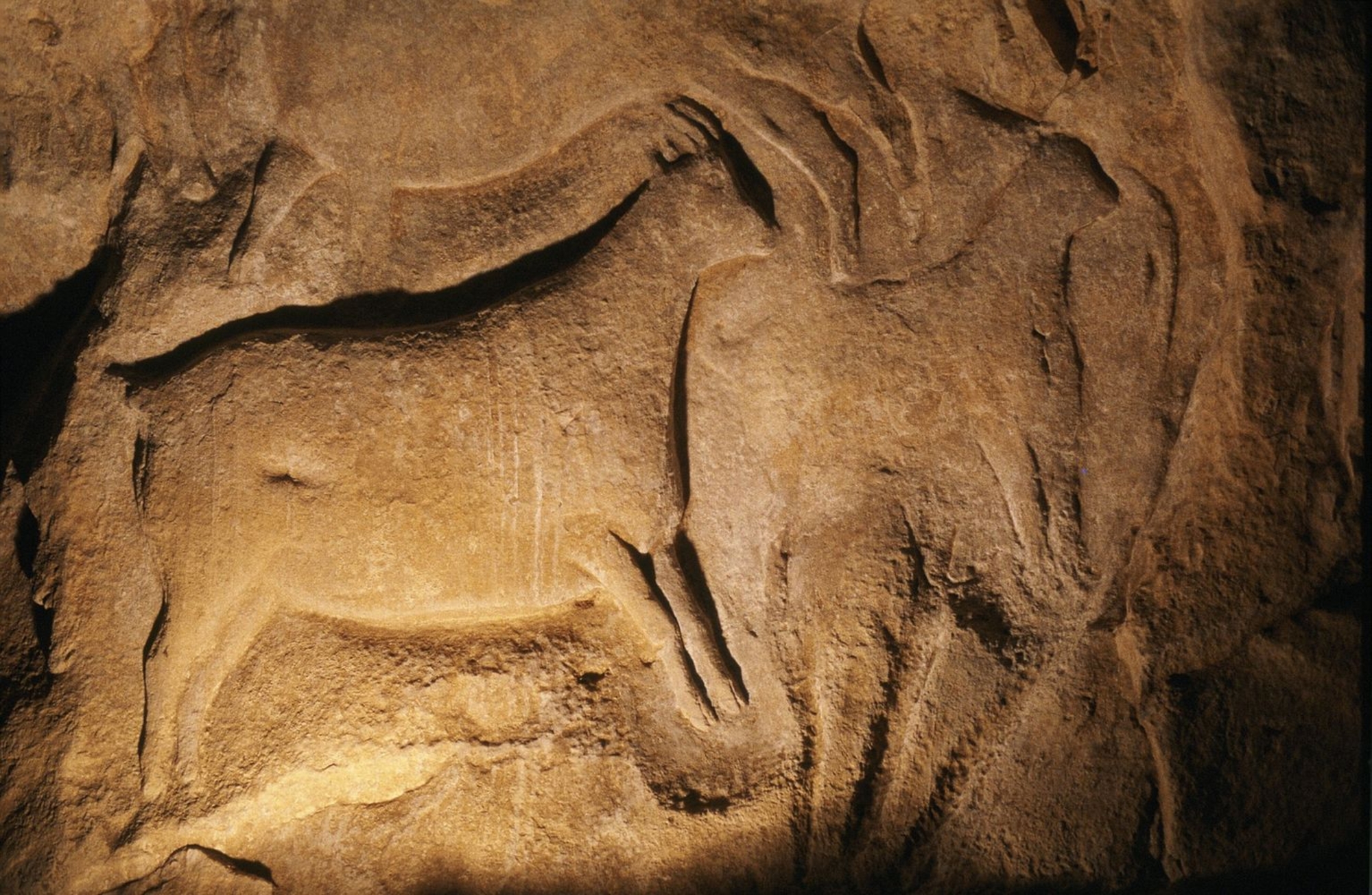
- Home
- Discover the sculptured rock shelters
- Wall sculpture
- Sculpting the wall
- An adapted support
Large-scale sculpture in the round requires a large surface with minimal fracturing. Thus the Magdalenians had to get rid of fractured surface elements caused by decompression of the ground and gelifraction. They could do nothing about tectonic fracturing affecting the rock mass. The sculptors sought to reach clean, non-fractured bedrock that could be engraved and sculpted.
To start, the gelifracted limestone was easily cleared, and the occupants reached the limestone mass that had decompressed into large sheets. On these, they laid down a multitude of intertwined figures etched with fine lines.
In a second step, in order to have a sufficiently large, even surface to sculpt in the round, particularly in the Bourdois Shelter, the Magdalenians removed every loose stone block and pulled off scales through hammering and widening decompression cracks. These efforts to clear the wall are evinced by the presence of shell pieces in engraved surfaces, found in occupation layers from the Middle Magdalenian. As the wall was cleared, to remove increasingly large decompression scales and tectonic dihedrals, the inhabitants enlarged fractures and cracks in the form of vertical grooves and corners .
The surface preparation was impressive: only few natural surfaces remain, and almost everything else has been worked. The original surface is found only in a very few areas. After pulling down blocks, a smooth wall surface was achieved by systematic picking and hammering of the rock. This would have been relatively easy on a freshly cleared surface free of calcium deposits.



